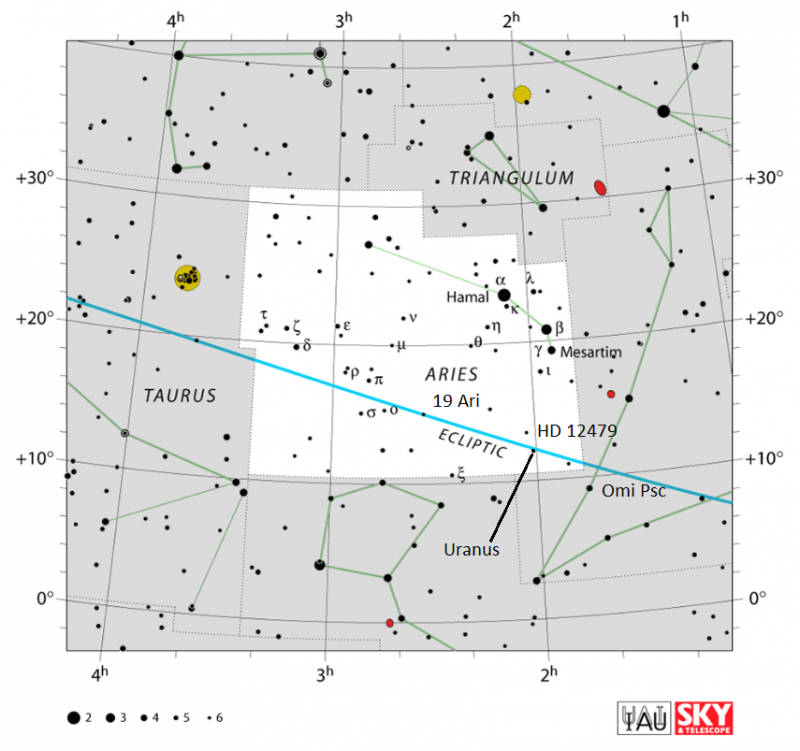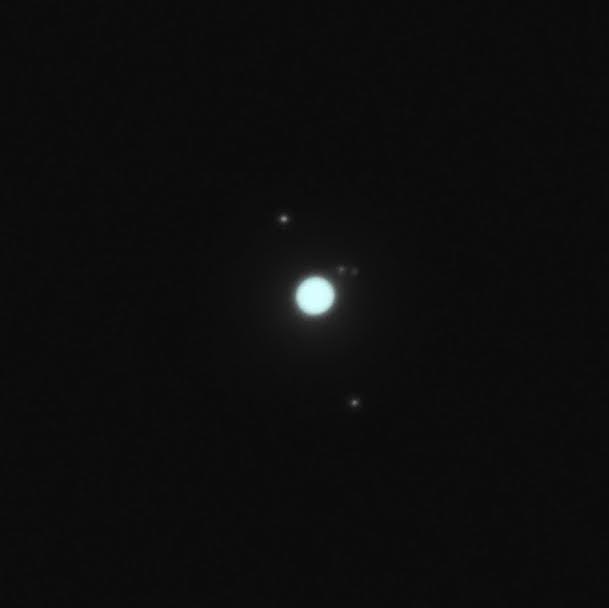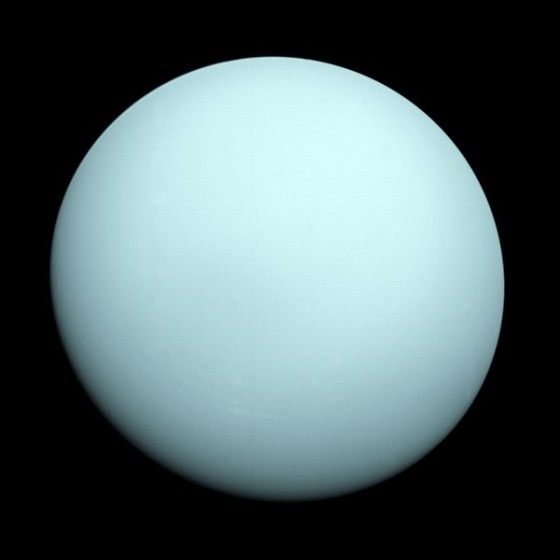What Color Does Uranus Appear to Be Through a Telescope
On January 31 and February 1, 2020, the waxing moon is near the seventh planet, Uranus, on our sky's dome. At a distance of 20 astronomical units – or 20 Earth-sun units – from Earth, Uranus is faint. It was the first planet to be discovered in modern times, by William Herschel in the year 1781. He was using a telescope! Most people do use a telescope or binoculars to see it, but some have glimpsed it with the eye alone on a moonless night. Why are we showing you Uranus near the moon then? Just so you can get an idea of where it is in the sky after sunset, so that you can notice the stars around it, and then find Uranus when the moon has moved away.
On both January 31 and February 1, the moon is bright; it's at or near first quarter. Uranus, meanwhile, is located in front of the faint constellation Aries the Ram, close to the border of the constellation Pisces the Fishes. Now here's the good news. Uranus moves only very slowly in front of the starry background. It'll stay in front of Aries for several more years. So if you notice the stars near the moon tonight, you can use these stars to get oriented and, ultimately, to locate the seventh planet.
A good familiarity with Aries is your ticket to locating this faint world. For a detailed sky chart of Aries, click on The Sky Live; and for a sky chart showing Uranus' position from 2019 to 2032, click on Naked Eye Planets.
Or try this chart from SkyandTelescope.com.
Or check out the chart below, which shows the constellation Aries.

Of course, the moon and Uranus are only close together on the sky's dome, not in space. The moon is nearly 250,000 miles (400,000 km) away from Earth, whereas Uranus lurks way out there, at well over 7,000 times the moon's distance from us. Click on the Moon Tonight for the moon's present distance in miles, kilometers or astronomical units (one astronomical unit = Earth/sun distance), and on Heavens-Above to know Uranus' present distance from the sun and Earth in astronomical units.
Recently, the very bright planet Venus and the very faint planet Neptune were in conjunction. View photos of the Venus-Neptune conjunction here.
Venus will soon have another conjunction with another very faint planet (though not as faint as Neptune). Yep, it'll be a conjunction of Venus with Uranus, and it'll happen on March 9, 2020. Venus is now sitting rather low in the west at dusk and nightfall. It'll be hard to miss this brilliant world, because Venus ranks as as the third-brightest celestial body in all the heavens, after the sun and moon. Day by day, as darkness falls, Venus will climb upward, toward Uranus, while Uranus will fall downward, toward Venus. The two will meet in March.
So know that these late January and early February evenings are not the best nights for seeing Uranus. You will have a tough time glimpsing it in the moon's glare. But maybe bookmark some links, and then, when the moon leaves the evening sky, you'll know where to look before Venus has its rendezvous with Uranus.


Bottom line: As darkness falls on January 31, 2020, the moon shines rather close to Uranus on the sky's dome.
EarthSky astronomy kits are perfect for beginners. Order today from the EarthSky store!
Read more: Ice giants Uranus and Neptune from skyandtelescope.com
.
Bruce McClure
View Articles
About the Author:
Bruce McClure served as lead writer for EarthSky's popular Tonight pages from 2004 to 2021, when he opted for a much-deserved retirement. He's a sundial aficionado, whose love for the heavens has taken him to Lake Titicaca in Bolivia and sailing in the North Atlantic, where he earned his celestial navigation certificate through the School of Ocean Sailing and Navigation. He also wrote and hosted public astronomy programs and planetarium programs in and around his home in upstate New York.
What Color Does Uranus Appear to Be Through a Telescope
Source: https://earthsky.org/sky-archive/moon-and-uranus-in-front-of-pisces/
0 Response to "What Color Does Uranus Appear to Be Through a Telescope"
Post a Comment